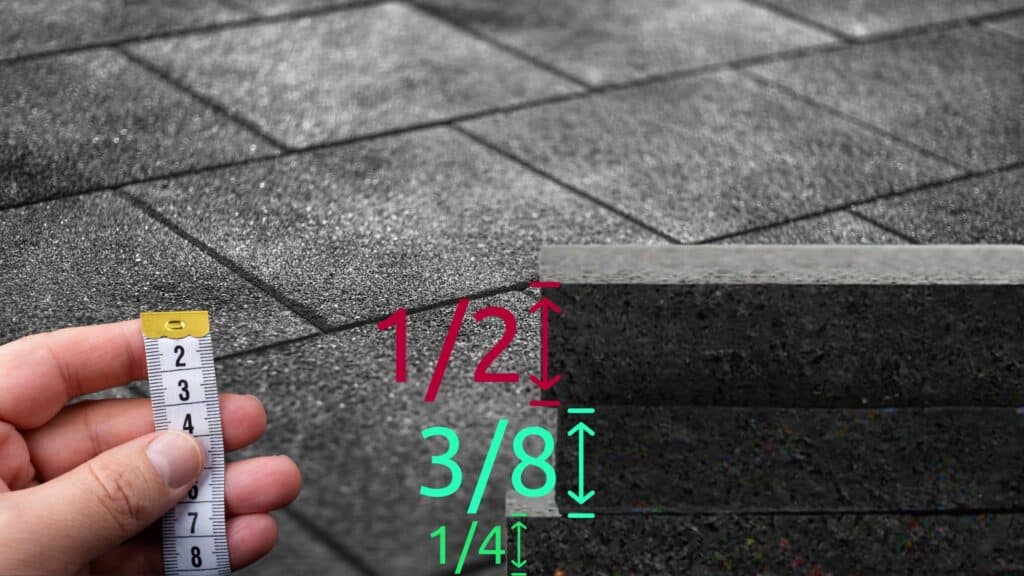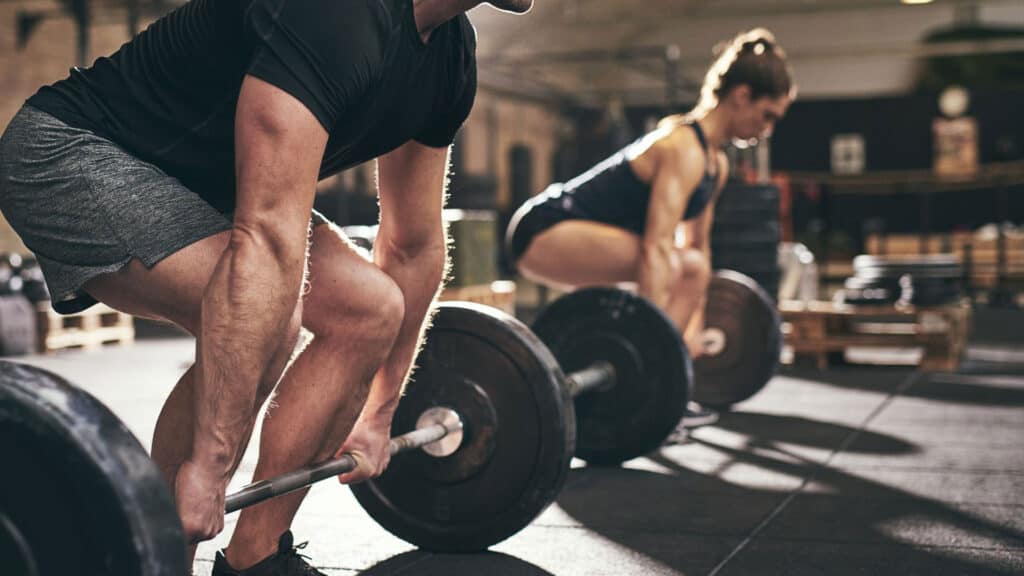Understanding Gym Flooring Thickness for Health Clubs (Intro)
As a health club owner, you must ensure your gym flooring thickness is the right to protect your equipment and your members. Crucially, you should provide flooring which creates the right environment while keeping sensitive neighbours happy. With this in mind, how thick should gym flooring be in a health club?
Your answer will rely upon the analysis of some critical factors. These include the type of equipment you have in the gym, the nature of activities on offer within the health club, expected footfall, and the well-being of your members. Considering these factors early on will make life easier and more comfortable for those who use your gym.

Choosing the appropriate gym flooring thickness merits the same amount of time and planning as any other aspect of a health club design. Getting it wrong or rushing a decision could result in a costly refit.
First, there is one critical factor to consider that is of paramount importance. Think about who else could be affected by your gym and its activities. Disrupting the tranquillity of a yoga class is one thing, but being a noisy nuisance to your neighbours could create negative discourse and land you in breach of noise-level regulations.
Neighbouring Rooms and Properties
There are two scenarios when choosing gym flooring:
- You are refitting or refreshing an established health club
- You are setting up a new health club
In the first instance, you know the thickness of the flooring your gym requires. In the latter scenario, you need to analyse the potential impact of a new gym. If the health club is a stand-alone building, considerations for neighbouring businesses or residential accommodations are not necessary. It is, however, vital to give thought to other rooms within the health club.
In a health club, there are likely to be quieter areas, like a yoga and pilates studio. In more high-end establishments, you have to consider the location of spa facilities, which could include beauty therapy and massage rooms. Then there are relaxation areas such as a cafe or chillout area. How close to the main gym are these quieter areas going to be?
If they share a wall or sit on the floor below, arranging your gym activity zones with quieter areas in mind will go some way to solving the problems caused by noise and vibrations. Additionally, installing sufficiently thick gym flooring will prove effective by acting as a shock absorber for vibrations while creating a soundproofing buffer for the noise.
If your health club is within a mixed-use or residential building, then you must consider your neighbours. Without adequate gym flooring, high-impact activity will cause vibrations and acoustic disturbances for those in close proximity. It would be wise to err on the side of caution by satisfying all affected parties. Install vibration-dampening thicker gym flooring to minimise the possibility of upsetting your neighbours and to adhere to noise level regulations.
Acoustic Consequences
A busy gym can be a loud place. Yet more so when you have a well-stocked free weights area. Once Olympic lifting and deadlifts enter into the mix, the clattering thumps can be thunderous, and to some of your members, it will be off-putting and intimidating – and bad for business!
It is wise to consider thicker gym flooring in areas where these lifts will occur. Experienced gym users will use what’s available to them, so if you want to limit the aggressive sounds of a dropped 100kg+ barbell, you might look into a lifting platform. If that doesn’t fit your budget, then a great alternative is to have extra-thick lifting mats that cushion the impact of these types of activities.

Having the right flooring thickness throughout the different zones of your gym will help limit the acoustic impact of all activities. Widely used, 8mm rubber flooring will limit vibrations and sounds resulting from weight machines and cardio zones. Thicker flooring, 12mm – 50mm, works when intending to limit the noise from people dumping dumbbells or slamming down barbells at the end of a set.
While all gyms will have a base level of noise, it’s a good idea to consider limiting the percussive damage that can occur when dropping weights. Thicker gym flooring creates a more welcoming gym environment, and in a health club setting, it adds to the ambience of a place intended to improve one’s overall well-being.
Durability, Impact, and Feel
Further to dampening the acoustic impact of eager gym users, the thickness of your gym flooring will also influence its durability. Rubber stands out in today’s gym environment as the go-to material for flooring due mainly to its ability to withstand and resist wear and tear. It also owes its dominance to the demise of the less stable and flimsy foam flooring of old.
Almost all workouts create floor impact, not just free weight use. For example, If your gym has a HIIT zone, then box jumps, kettlebell swings, medicine ball slams, and battle ropes can all cause significant damage to insufficient flooring. In addition to protecting the body, thicker flooring can prevent damage caused by regular bursts of impact.
As well as having a stable capacity for the density of foot traffic it will endure day-to-day, a notable effect of thicker rubber flooring is its ability to produce a warm, floating feeling when walking around the gym. A welcome relief for gym users with weary legs or aching joints, it provides an almost therapeutic effect on those roaming the gym floor and recovering from their workout.
Safety and Protection Above All
The overriding factors to consider when deciding how thick gym flooring should be are your members’ safety and the protection and longevity of your equipment. Thicker flooring will provide more cushioning for impacts and limit injury risk. However, slightly thinner flooring could prove more stable underfoot for loaded exercises. It comes down to balancing needs and investigating whether a certain thickness would provide better safety in a specific gym zone.
Protecting your equipment is as crucial for safe use as it is to ensure longevity. Faulty or damaged equipment can cause serious injury, and repeated dropping of equipment on inadequate flooring will put safety at risk. A free weights area will benefit from thicker flooring to prevent damage, not only to the subfloor but to the piece of apparatus used.
On both fronts, when looking to optimise the safety of your members and the protection of your equipment, it makes sense to consider a flooring thickness of at least 12mm. It is the minimum thickness for impact cushioning while maintaining a good level of underfoot stability. The thicker you go, the more cushioning you will have, protecting your equipment and minimising the risk of any potential damage.
Summary
Choosing the right thickness of gym flooring for your health club will come down to the factors you consider most important. Although it is in your interest to respect the neighbouring rooms and properties that border your gym, the safety and well-being of your members should take precedence.
If your budget allows, you can cover all of your bases by selecting rubber flooring from 12mm to 50mm thick, which will satisfy most of your noise and impact concerns while minimising the risk of harm to your members. As a bare minimum, 8mm flooring will dampen some of the acoustic issues your gym will present while providing sufficient safety to all concerned.
There is no formula to determine the ideal thickness of gym flooring. It comes down to figuring out the requirements of your gym and the limit of your budget to satisfy as many of them as possible.
If you have any questions about what you have read and are interested in finding out more, please don’t hesitate to get in touch.
To comment on the article, please proceed to the Telegram post. We encourage you to read our comprehensive article “How To Choose Gym Flooring“.
Disclaimer: The opinions and positions expressed in this publication are those of the authors and collaborators and do not necessarily reflect the views or policies of the professional fitness community.

